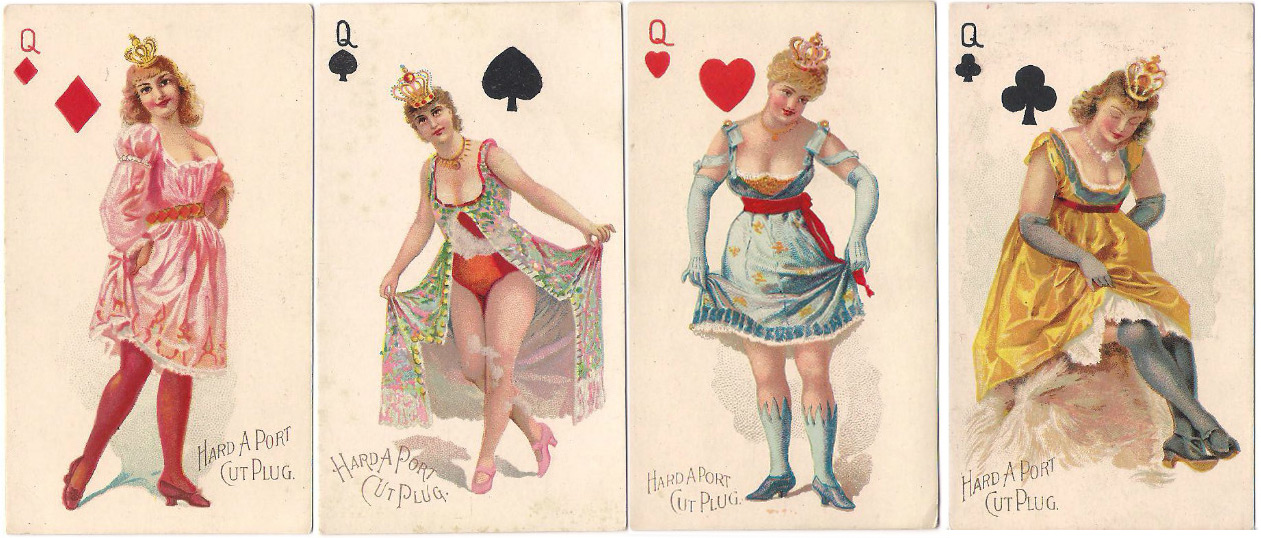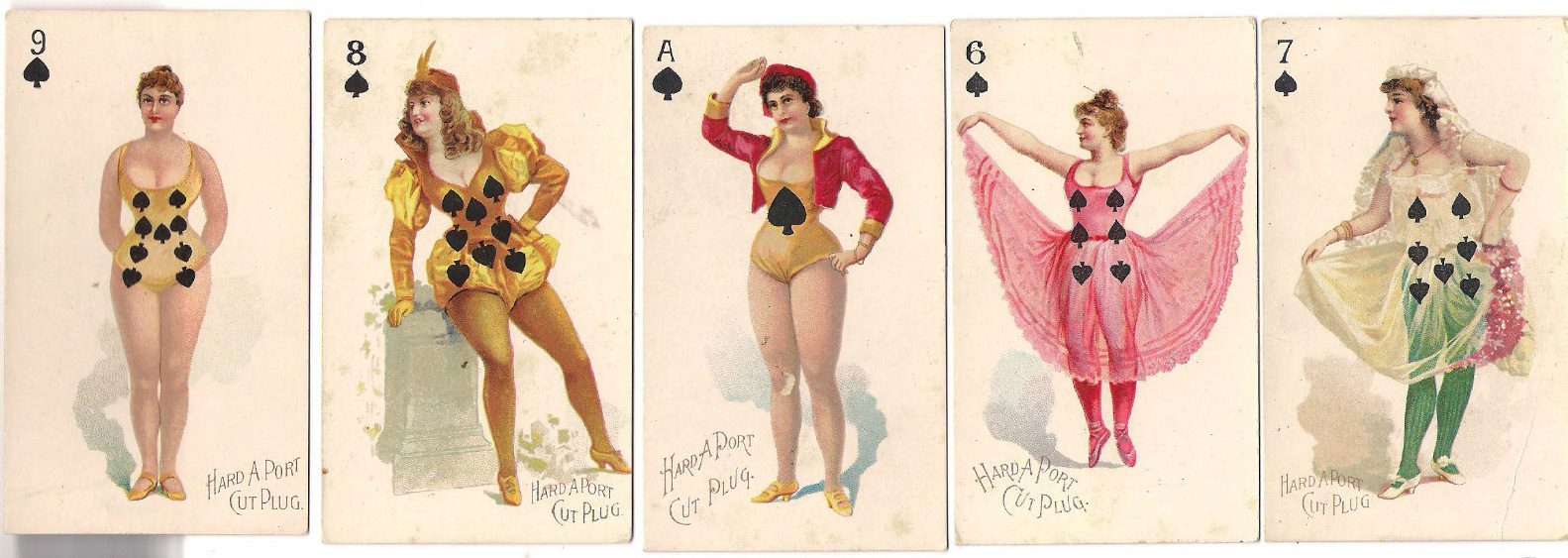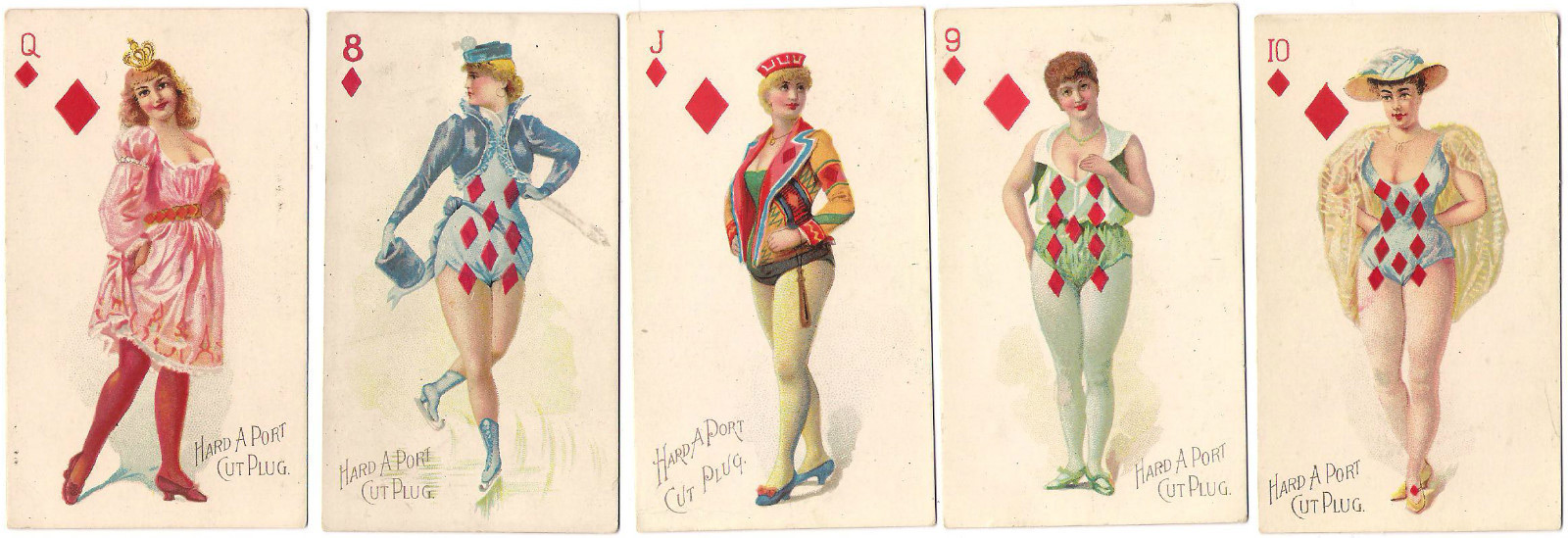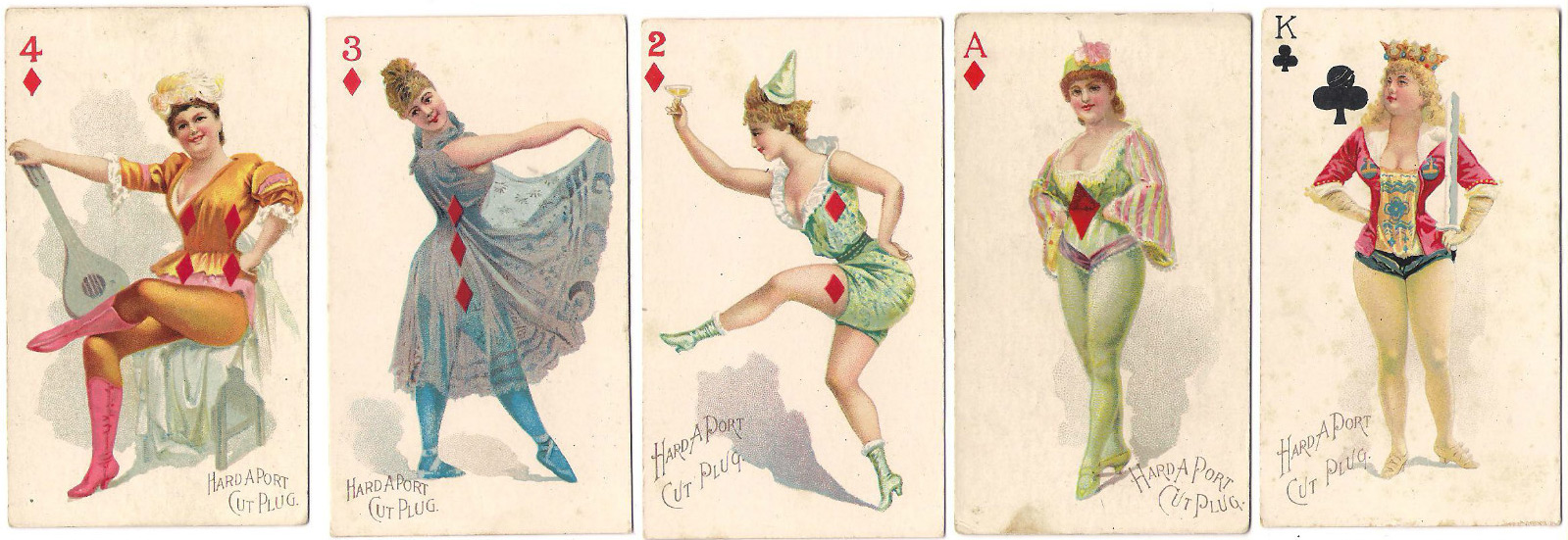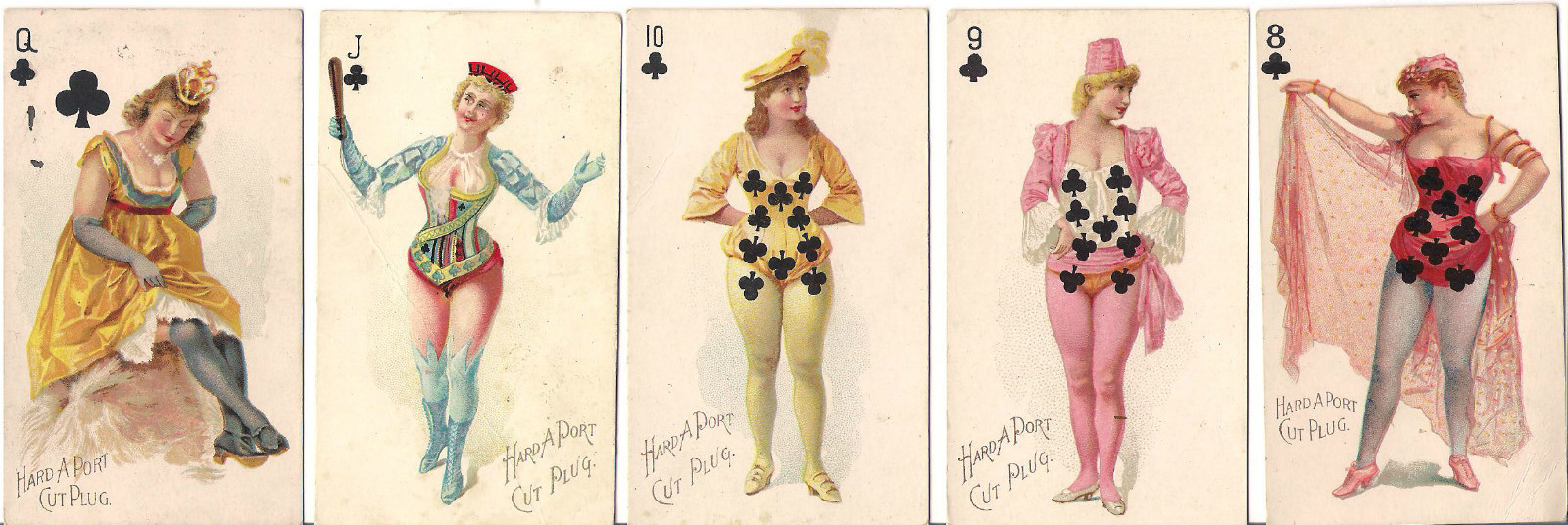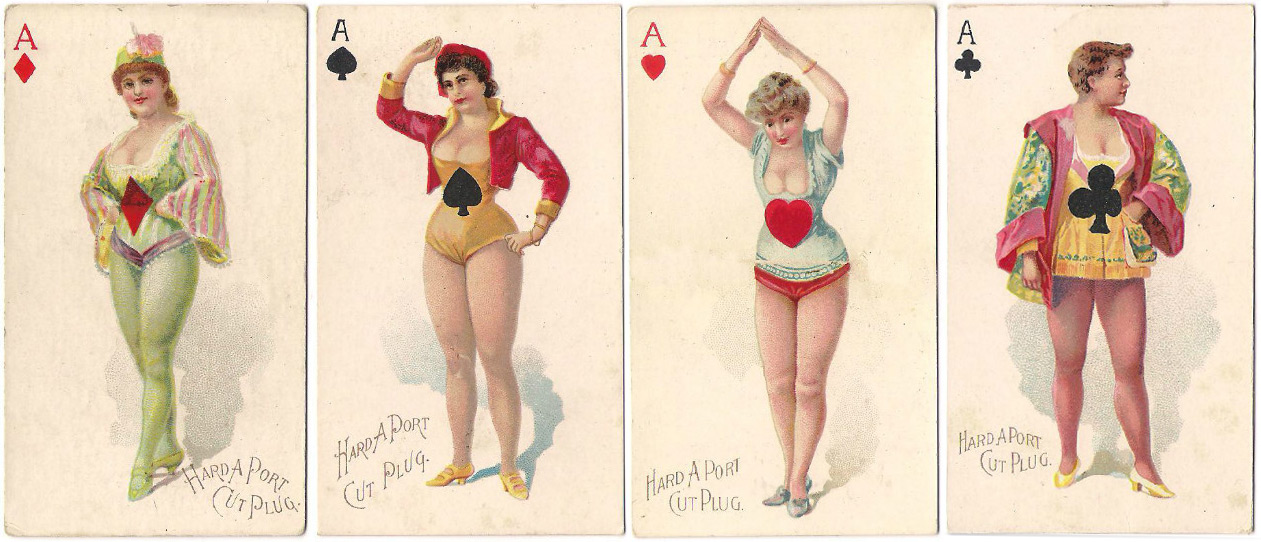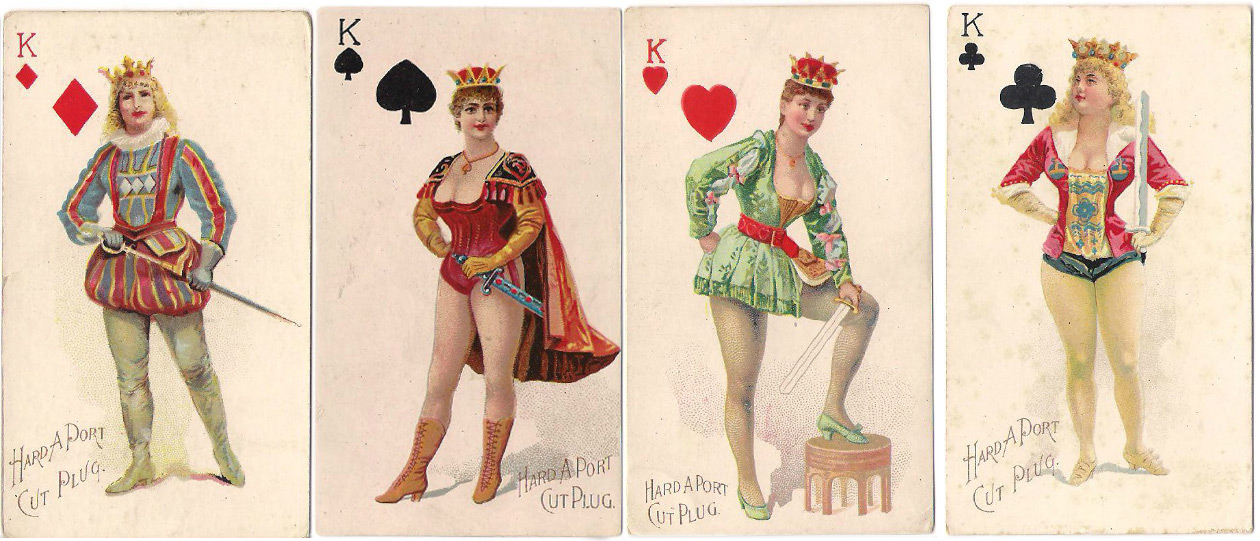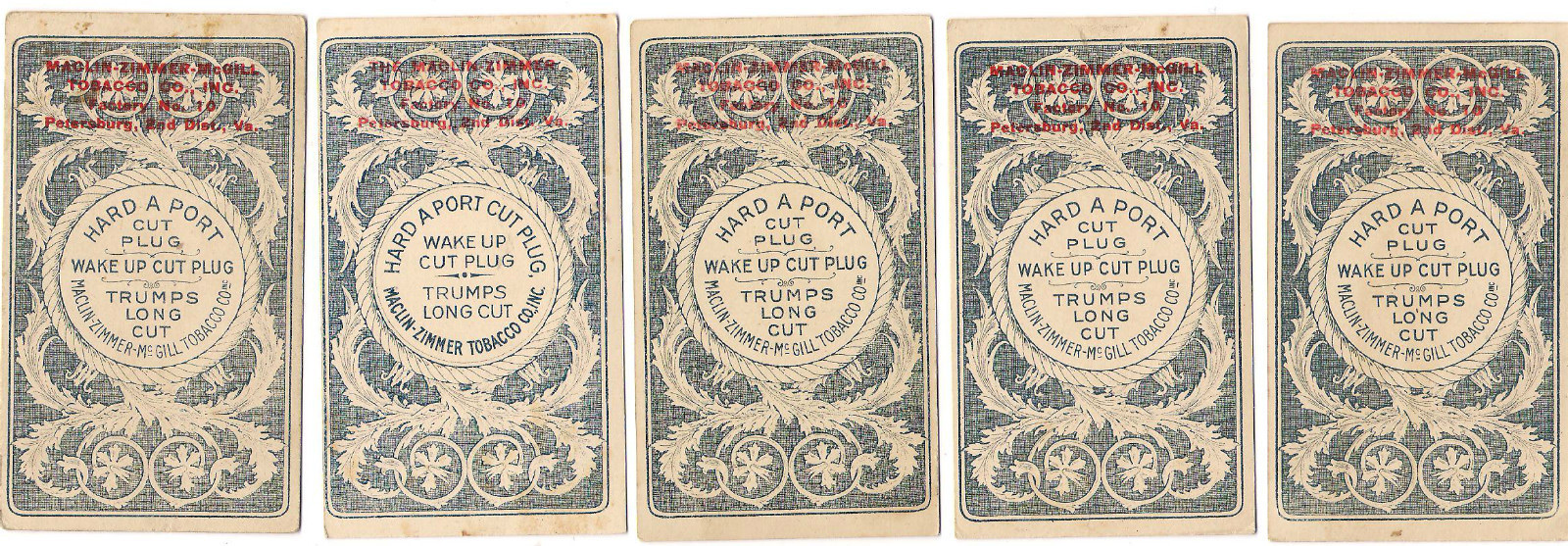Hard-a-Port
Tobacco insert cards were a very successful marketing innovation which started in the nineteenth century.
Tobacco Insert Playing Cards
Collectible insert cards were a marketing innovation which started in the nineteenth century. Most of us will be familiar with these from our own childhood. Subjects varied from theatre or cinema stars and actors or statesmen, to animals, butterflies or birds, aircraft, garden flowers or playing cards. Cards were included inside tobacco products, chewing gum, tea, chocolate, match boxes, magazines, etc. In some cases they were not necessarily aimed at children but were aimed at the collecting urge in the average person.
The “Hard-a-Port Cut Plug” series depicts actresses with angelic faces dressed for the pantomime or dance hall. The costumes mostly have a playing card theme, and the court cards wear crowns or hold swords or other symbols of office. The Aces and numeral cards have the suit symbols superimposed over the costumes. Plug tobacco is a form of loose leaf tobacco made for chewing which was the most prevalent form of tobacco used in the United States until it was overtaken by cigarette smoking in the early 20th century.
Above: “Hard-a-Port Cut Plug” tobacco insert playing cards published by MacLin-Zimmer-McGill (USA) c.1890, featuring a selection of beautiful actresses from a past era, in poses some might consider risqué. This set of designs was used in around six different editions with various backs advertising “Hard-a-Port Cut Plug” and/or “Trumps Long Cut” chewing tobacco. They were originally produced by Moore and Calvi, then by their successors MacLin and Zimmer and Maclin-Zimmer-McGill in around the 1890s (see note below).
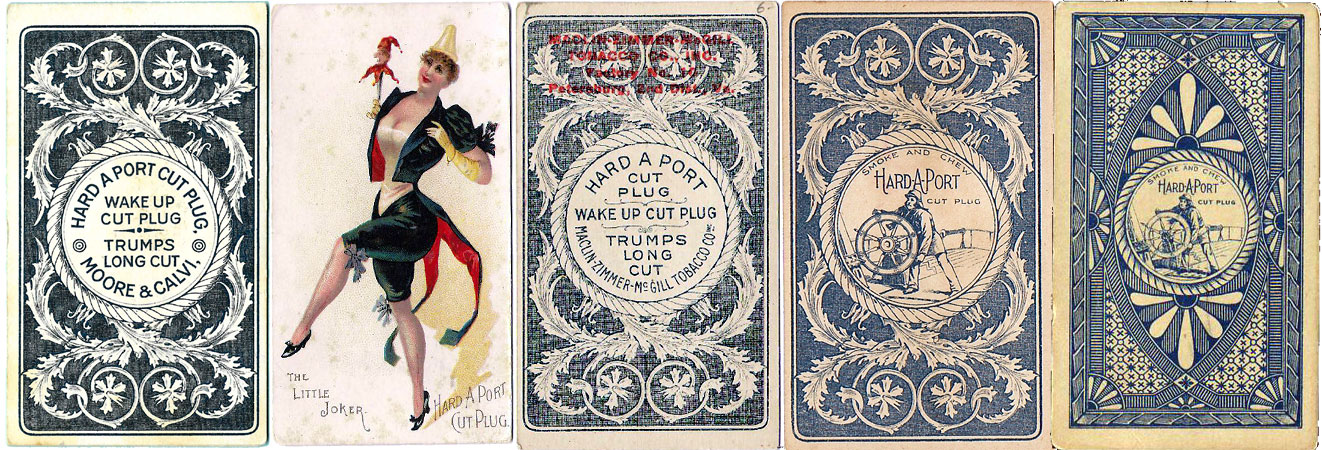
Above: the Joker and several back designs advertising “Hard-a-Port Cut Plug” and/or “Trumps Long Cut” chewing tobacco Click to zoom
Risqué Beauties of the Theatre
The pin-up girls from the “Hard-a-Port” set were re-published in 2003 by F.G. & Co., a company owned by Gianna Majzler and Darren Calkins.
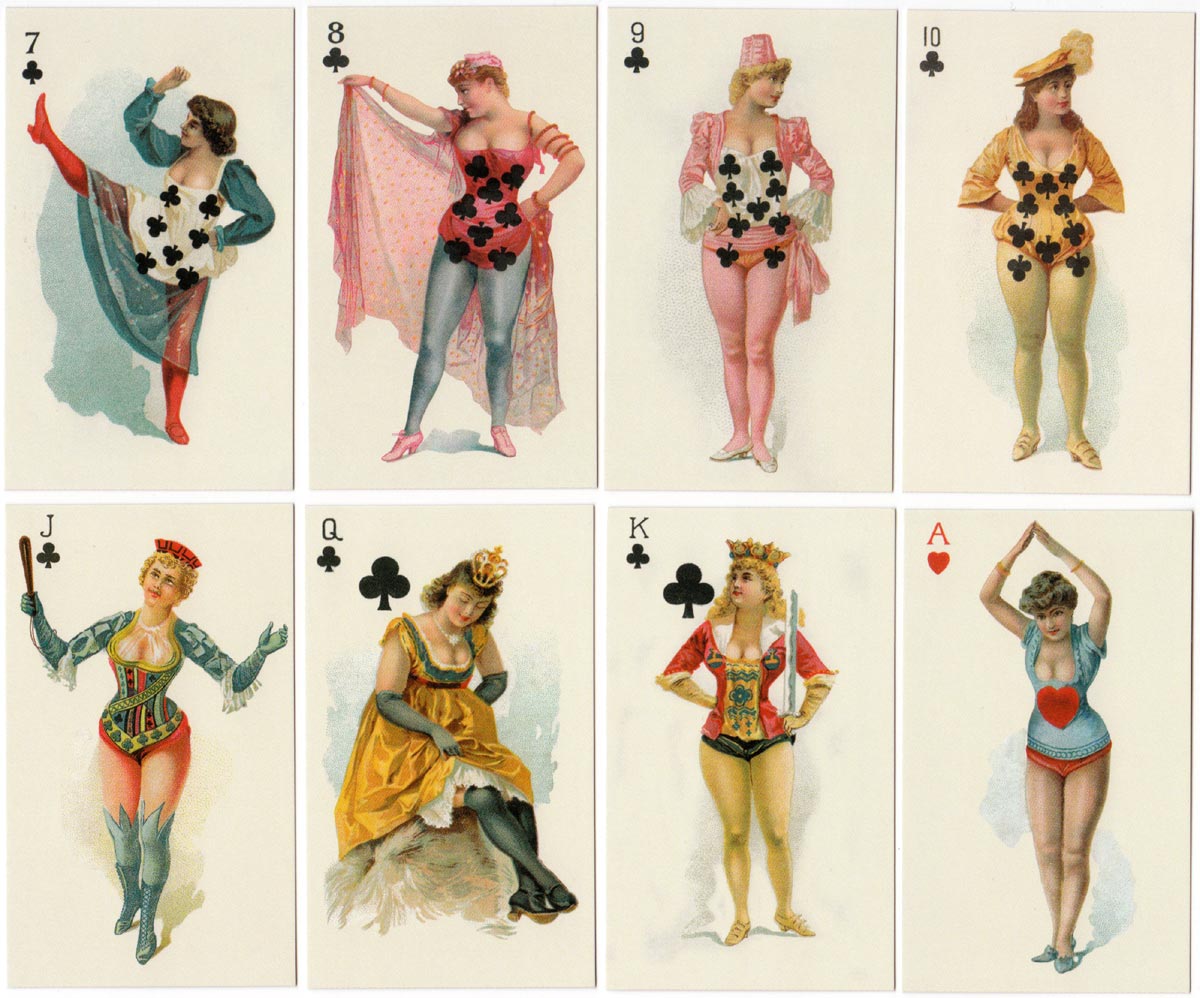
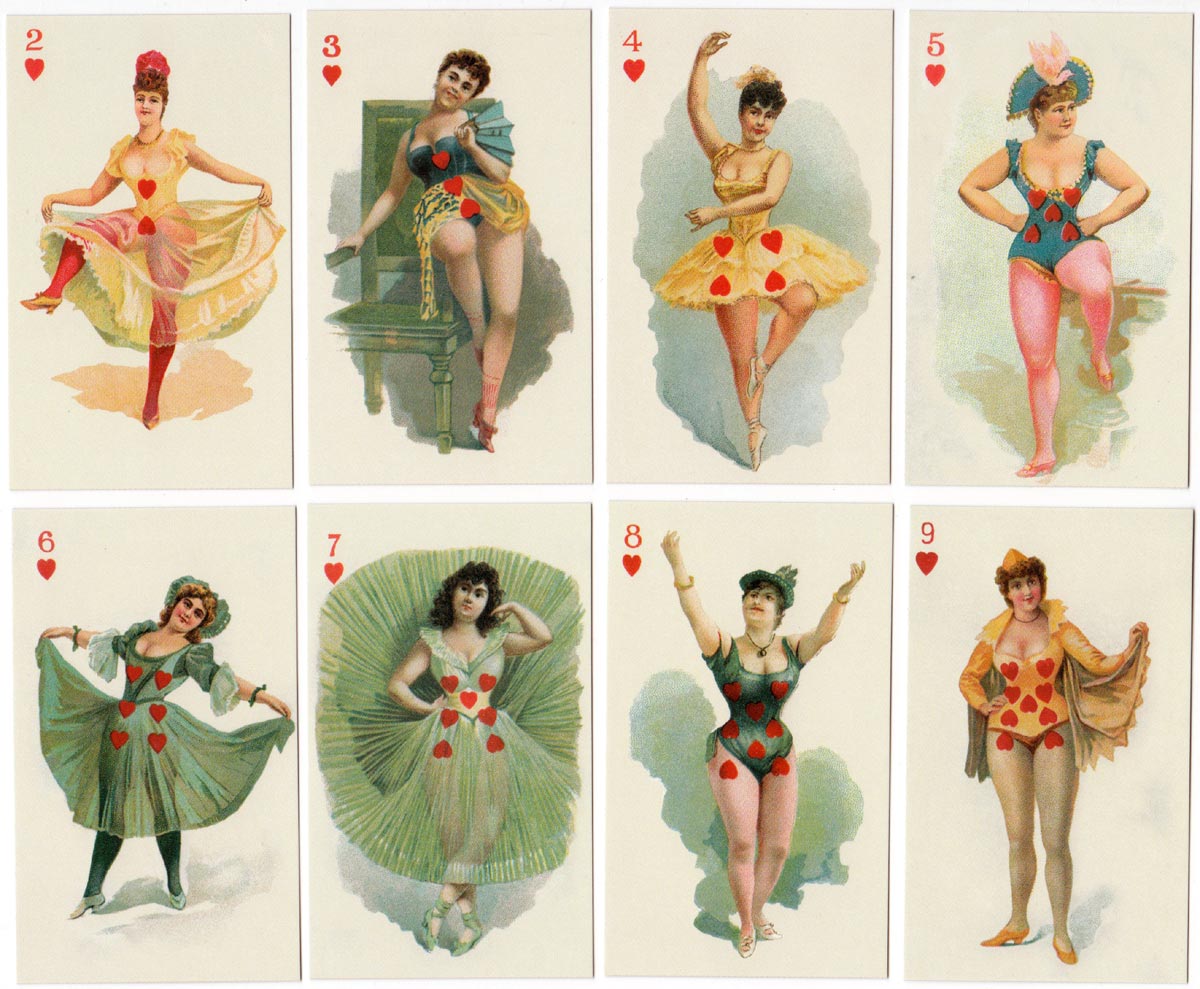
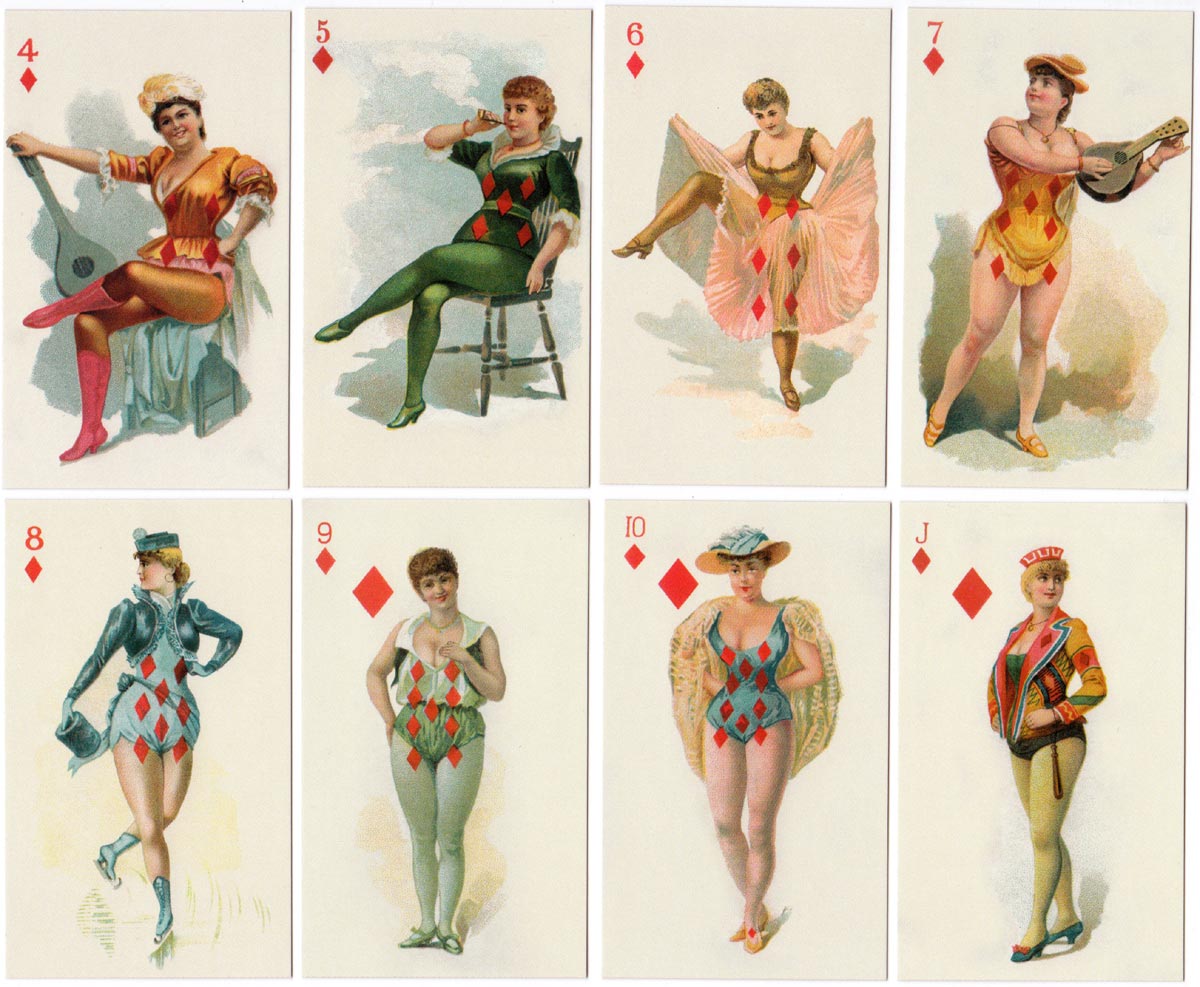
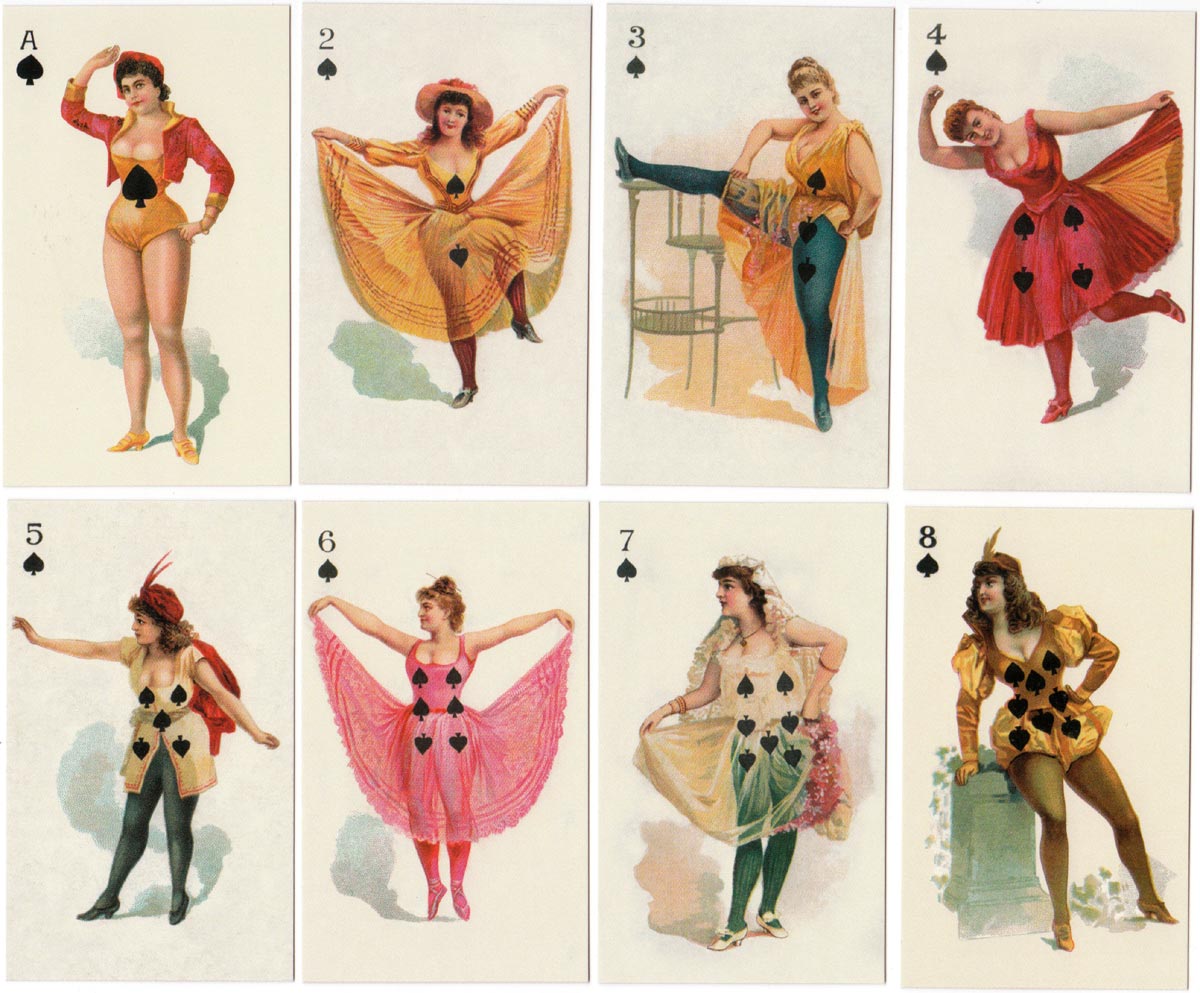
Above: selection from "Risqué Beauties" taken from the "Hard-a-Port" set and re-published in 2003 by F.G. & Co. Images courtesy Rex Pitts.
See more insert playing cards: “El Perú” Fabrica de Cigarrillos, Lima c.1890 • Liebig Beef Extract playing cards c.1891 • Roldan & Cía tobacco insert cards, Peru c.1895 • Spanish Historical Characters, c.1896 • Carreras Fortune-Telling c.1926 • Mini-Naipes FUTBOL, Montevideo, c.1928 • Carreras Ltd Dominoes c.1929 • Bucktrout & Co. Ltd c.1930 • Baraja Hoja de Afeitar, Spain c.1938 • Chocolondo, Uruguay • Naipes de Truco, Argentina 1999
Note from Peter Burnett
According to Hochman Encyclopedia of American playing cards (p.212-213) there appears to have been c. 6 variations (all c. 1890):
- Moore & Calvi. (This also appears with "Cullingworth" overprinted in red on the reverse, and also with MacLin-Zimmer overprinted on the reverse)
- Maclin-Zimmer replaces Moore & Calvi on the reverse
- Maclin-Zimmer-McGil on reverse
- Maclin-Zimmer-McGil II (on faces "Trumps Long Cut" appears in addition to the Hard A Port logo)
- Hard A Port blue backs (back design shows seaman at the wheel)
- Trumps Long Cut blue backs (slightly wider than previous variations)
By Rex Pitts (1940-2021)
United Kingdom • Member since January 30, 2009
Rex's main interest was in card games, because, he said, they were cheap and easy to get hold of in his early days of collecting. He is well known for his extensive knowledge of Pepys games and his book is on the bookshelves of many.
His other interest was non-standard playing cards. He also had collections of sheet music, music CDs, models of London buses, London Transport timetables and maps and other objects that intrigued him.
Rex had a chequered career at school. He was expelled twice, on one occasion for smoking! Despite this he trained as a radio engineer and worked for the BBC in the World Service.
Later he moved into sales and worked for a firm that made all kinds of packaging, a job he enjoyed until his retirement. He became an expert on boxes and would always investigate those that held his cards. He could always recognize a box made for Pepys, which were the same as those of Alf Cooke’s Universal Playing Card Company, who printed the card games. This interest changed into an ability to make and mend boxes, which he did with great dexterity. He loved this kind of handicraft work.
His dexterity of hand and eye soon led to his making card games of his own design. He spent hours and hours carefully cutting them out and colouring them by hand.

Related Articles
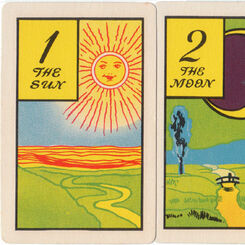
Fortune Telling
Fortune Telling cards by Whitman Publishing Co., 1940.
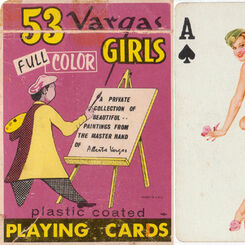
Vargas Girls
‘Vargas Girls’ paintings by Alberto Vargas in a deck of cards published by Creative Playing Card Co ...
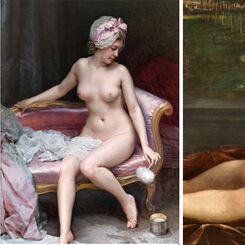
The Art of Pin-Up decks
Feminine beauty has been appreciated since prehistory.

Portraits of a Lady
Portraits of a Lady by Lo Scarabeo, 2003.
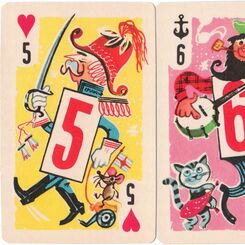
Crazy Eights
Crazy Eights by Whitman Publishing Co., 1951.
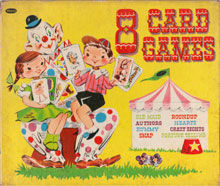
Whitman 8 Game Box
Whitman 8 Card Games boxed set, 1951.
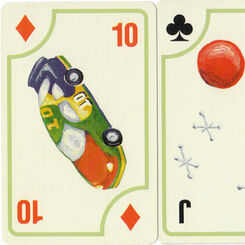
Holiday Games
IE Design Holiday Games, c.1990s.
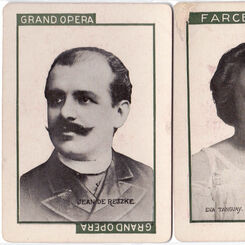
Stage
‘Stage’ card game © 1904 C. M. Clark Publishing Co. Boston, Mass. with portraits of popular actors a...
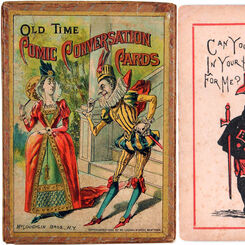
Comic Conversation
Old Time “Comic Conversation” cards published by McLoughlin Bros, N.Y., c.1887.
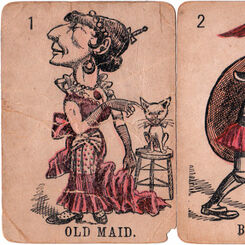
Merry Game of Old Maid
The Merry Game of Old Maid published by McLoughlin Brothers, c.1880s.
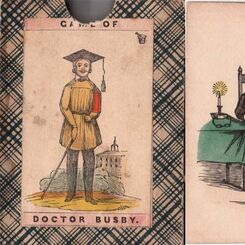
Doctor Busby
“Game of Doctor Busby“- anonymous manufacturer, c.1850.

Parker Brothers
Parker Brothers, Salem, Mass., USA.

Cartes à Rire
Transformed playing cards featuring satirical caricatures of political figures then in the ascendant...
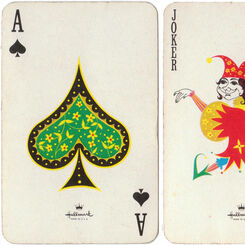
Trump 777
Trump 777 decorative playing cards by Hallmark.
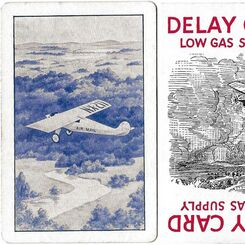
Wings
‘Wings’, the air mail game © 1928 by Parker Brothers Inc.

Space-O
“Space-O” card game published by Pla-Mor Games manufactured by ARRCO Playing Card Co, USA, 1950s,
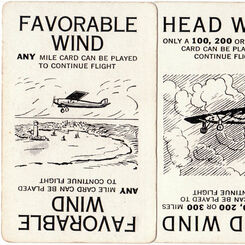
Lindy
‘Lindy’ - the flying game - a sequel to ‘Touring’ by Parker Brothers, 1927.
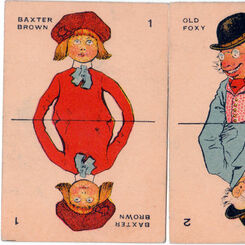
Old Maid
‘Old Maid’ card game manufactured by Milton Bradley Co., Springfield, Massachusetts, USA, c.1920s
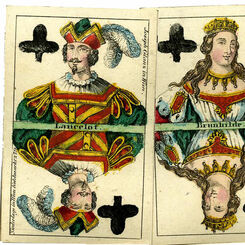
J. Glanz Historical playing cards
Historical Theatrical playing cards manufactured by J. Glanz, c.1860.
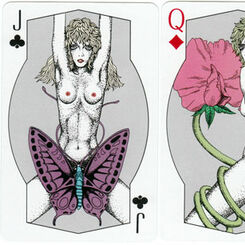
Shapely
“Shapely” non-standard adult playing cards manufactured by Angel Playing Cards Co., Japan, 1980
Most Popular
Our top articles from the past 60 days



